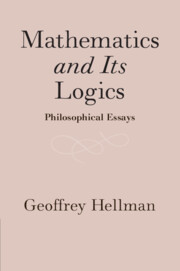Book contents
- Mathematics and Its Logics
- Mathematics and Its Logics
- Copyright page
- Contents
- Acknowledgements
- Introduction
- Part I Structuralism, Extendability, and Nominalism
- Part II Predicative Mathematics and Beyond
- 7 Predicative Foundations of Arithmetic
- 8 Challenges to Predicative Foundations of Arithmetic
- 9 Predicativism as a Philosophical Position
- 10 On the Gödel–Friedman Program
- Part III Logics of Mathematics
- Index
- References
8 - Challenges to Predicative Foundations of Arithmetic
from Part II - Predicative Mathematics and Beyond
Published online by Cambridge University Press: 26 January 2021
- Mathematics and Its Logics
- Mathematics and Its Logics
- Copyright page
- Contents
- Acknowledgements
- Introduction
- Part I Structuralism, Extendability, and Nominalism
- Part II Predicative Mathematics and Beyond
- 7 Predicative Foundations of Arithmetic
- 8 Challenges to Predicative Foundations of Arithmetic
- 9 Predicativism as a Philosophical Position
- 10 On the Gödel–Friedman Program
- Part III Logics of Mathematics
- Index
- References
Summary
This is a sequel to our article “Predicative foundations of arithmetic” (Feferman and Hellman [1995], reproduced as Chapter 7 in this volume), referred to in the following as PFA; here we review and clarify what was accomplished in PFA, present some improvements and extensions, and respond to several challenges. The classic challenge to a program of the sort exemplified by PFA was issued by Charles Parsons in a 1983 paper, subsequently revised and expanded as Parsons [1992]. Another critique is due to Daniel Isaacson [1987]. Most recently, Alexander George and Daniel Velleman [1998] have examined PFA closely in the context of a general discussion of different philosophical approaches to the foundations of arithmetic.
Information
- Type
- Chapter
- Information
- Mathematics and Its LogicsPhilosophical Essays, pp. 117 - 138Publisher: Cambridge University PressPrint publication year: 2021
